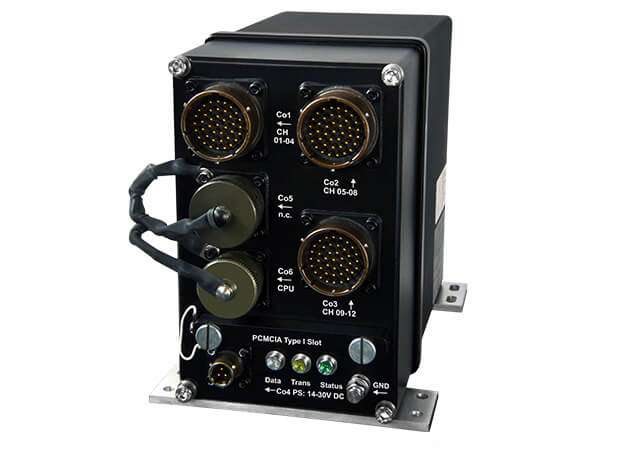
The AIDA system is a modern Data Acquisition System, originally developed for the military Lynx helicopter. The system covers the monitoring and time-referenced signal recording and analysis of more than 10 signals such as the rotary speed of the main rotor, speed of high- and low pressure turbines, drive torque, the angle of bank, the airspeed, the load on the sponsons, exceedance of minimum height for radar measurement, exact determination of the rotor start / stop cycles and the estimation of the life time of the turbines.
Also acoustic and optical warning signals for the pilot can be activated when the maximum rotation speed of the main turbine is reached, or in case the radar height measurement falls below a minimum level and for excessive stress loads on the landing gear. It has been proven that the AIDA recorder provides higher flight safety, extends the inspection intervals for all mechanical parts of the air craft and considerably reduces the aircraft service costs. Typical applications include the determination of start and landing weights, measurement of actual flight hours, load at landing, determination and analysis of manoeuvres and incidents.
Technical Features of AIDA Recorder
- acoustic warning signal for main rotor overspeed
- acoustic warning signal for radar altimeter low heights
- exact measurement of rotor start / stop cycles
- estimation of turbine life time consumption
- drives a dedicated lamp in the CWP
- built-in self monitoring features
- time history recording of more than 10 signals
- internal storage lasts for more than 100 flight hours
- fast data read out via SRAM cards
- customised technical features possible at any time
Recorded Signals
- Main Rotor Speed
- High and Low Pressure Turbine
- Rotational Speed
- Engine Torque
- Bank Angle
- Indicated Air Speed
- Strain of the Sponsons
- Weight on Wheel Switch
- Radar Altimeter Low Warning
Proven Benefits
- improved safety in flight
- detection of all critica auto rotation events
- lengthening of maintenance intervals
- extension of the air frame life time
- prolongation of the engine exchange interval
- decreased maintenance costs
- eased load assumptions for fatigue life estimations
- enables the creation of a substantial data base of the actual loads and usage spectrum
- used fleet-wide by the Dutch, German and Brazilian Navies
Admission of AIDA recorder
The AIDA recorder is certified for aviation systems according to the MIL-STD-810E, electromagnetic compatibility according to MIL-STD-416D and vehicle power supply according to MIL-STD-704E.
